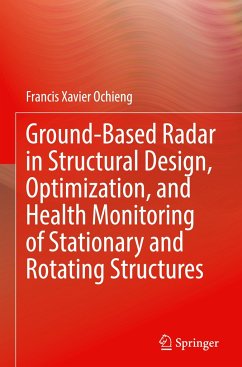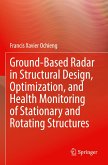This book provides a practical application for using ground-based radar (GBR) as a remote (non-contact) sensor for structural health monitoring (SHM) in the development of sustainable and robust stationary and rotating structures, such as beam-like bridges, towers, wind turbines, and hydropower turbines. It integrates cutting-edge research into an easy-to-understand approach for non-radar and monitoring specialists, building on the methods and theory of working with radar systems, SHM frameworks, GBR signal processing, and validation techniques. All aspects of in-field monitoring and use during the design and testing of structures are covered, including data acquisition and processing, damage detection techniques, and damage prognostic techniques. The book is a hands-on reference that provides critical information on GBR for practitioners, university instructors, and students involved in structural design, optimization, and health monitoring of stationary and rotating structures.
Bitte wählen Sie Ihr Anliegen aus.
Rechnungen
Retourenschein anfordern
Bestellstatus
Storno








